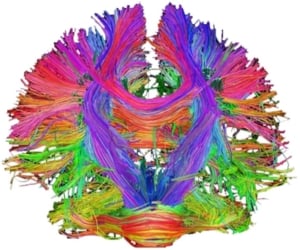Central Nervous System (CNS)

The nervous system extracts information from both internal and external environments, and it coordinates behavior by interpreting the extracted information and transmitting electrochemical signals throughout the body. The nervous system consists of two basic parts: the central nervous system (CNS; brain and spinal cord) and the peripheral nervous system (PNS; all other parts outside of the brain and spinal cord). Both systems consist of thousands of cellular subtypes, each with unique morphologies and gene expression profiles. In addition, genetics, the external environment, and the interactions between the two play established roles in the health of the nervous system. The nervous system brings all of these things together, and its outputs are behavioral, neurochemical, pharmacogenomic and proteomic phenotypes.
Despite the complexity described above, many rodent models have been generated that approximate neurological diseases in humans (McGonigle, 2014). For example, mutant mice are available that model fragile X syndrome, while others model Alzheimer’s disease. Furthermore, rodents exhibit some behavioral responses that are similar to those in humans. Such responses can be assayed with behavioral tests that evaluate levels of anxiety, depression, photophobia, addiction or cognition, etc. Combining a rodent model with behavioral analysis is a great start towards validating the efficacy of a new chemical entity (NCE), and validated efficacy is needed to drive the development of therapeutics that aim to improve health or prevent disease (National Academies of Sciences, Engineering and Medicine [NASEM], 2017).
Our goal as the Neuroscience team at Inotiv is to provide you with high-quality data acquired from the best available models and biomarkers for the nervous system, regardless of whether your interest is in disease, surgical approaches, neurodevelopment, or normal functions, mechanisms and pharmacodynamics. Our team features a minimum of 50 years of combined experience in understanding the effects of compounds from the molecular and genetic levels, to receptor function, to biochemical, cellular and tissue functions, and finally to whole animal behavior and nervous system responses. Ultimately, our capabilities and partners will allow for better translation and better design of clinical trials for your NCE or functional ingredient.
The capabilities described here in the CNS section of the Inotiv website are only a selection of our available models that have the highest demand from our customers. Our experience includes, but is not limited to, current in vivo approaches to stress, anxiety (Griebel and Holmes, 2013; Olivier and Olivier, 2020), depression, cognition, peripheral neuropathy and headache (Bubier and Chesler, 2012; McGonigal, 2014), as well as in vitro approaches to primary rodent brain cells and human-derived organoids (NASEM, 2017). However, we are also interested in working with you in developing more sophisticated, cutting-edge models of the CNS and PNS that will suit your needs and incorporate new technologies with testable hypotheses and appropriate pharmacology. For example, we can offer the combination of our neuroscience capabilities with those of our gut or immune system teams (see their respective sections on this website), and then make use of our partners for readouts from proteomic or histological biomarkers.
References
Bubier J.A. and Chesler, E.J. (2012) Accelerating discovery for complex neurological and behavioral disorders through systems genetics and integrative genomics in the laboratory mouse. Neurotherapeutics 9: 338-348.
Griebel, G. and Holmes, A. (2013) 50 years of hurdles and hope in anxiolytic drug discovery. Nature Reviews Drug Discovery 12: 667-687.
McGonigle, P. (2014) Animal models of CNS disorders. Biochemical Pharmacology 87: 140-149. National Academies of Sciences, Engineering and Medicine (2017) “Therapeutic development in the absence of predictive animal models of nervous system disorders: proceedings of a workshop.” Washington, DC: The National Academies Press. https://doi.org/10.17226/24672.
Olivier, J.D.A. and Olivier, B. (2020) “Translational studies in the complex role of neurotransmitter systems in anxiety and anxiety disorders.” In Y.-K. Kim (ed.), Anxiety Disorders, Advances in Experimental Medicine and Biology. 1191; ch. 8, pp. 121-140. https://doi.org/10.1007/978-981-32-9705-0_8
Related Pages
- Glioblastoma Models in Mice
- Epilepsy Models in Rats and Mice
- Addiction Models in Rats and Mice
- Cognition Models in Rats and Mice
- Experimental Autoimmune Encephalomyelitis (EAE)
- Developmental Milestones Aka Functional Observation Battery
- Anxiety Models in Rats and Mice
- Depression Model in Rat
- Fragile X Syndrome (FXS) in Mice
- Parkinson’s Disease Models in Rats and Mice
- Alzheimer’s Disease Model in Mice


